butterflies Life Cycle
genus of butterfly
Butterflies: Natural Science
Butterfly Facts
Who doesn’t enjoy witnessing one of these winged beauties in flight? From their brightly colored bodies to the effortless motion that seems in sync with some unheard symphony, butterflies are an insect each of us can appreciate. You may think you already know all about butterflies, but how much do you really know? This list includes 10 facts about butterflies that are sure to make you think about them in a whole new way.
Butterflies, like many other insects, are pollinators. As they sip the nectar they spread pollen from flower to flower. Without this service, the plants could not reproduce.
Butterflies and their insect relatives are very fascinating animals. Here at the Refuge they are easily observed and especially abundant.
10 Fun Facts about Butterflies
Butterfly Wings Are Transparent
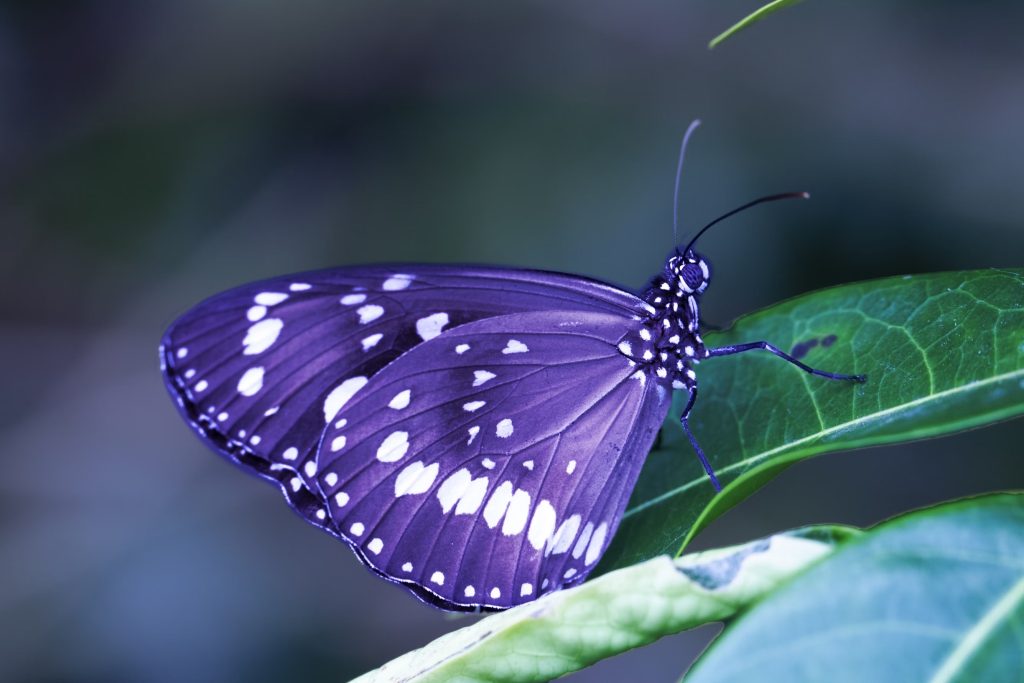
Before you feel the need to schedule an eye exam, let us explain. The wings of a butterfly are covered in a multitude of miniature scales –thousands of them. And those colors you see when a butterfly flits across your yard are the reflection of various colors through the scales. The wings themselves are made up of a protein called chitin, which is the same protein that forms an insect’s exoskeleton. And much like an exoskeleton, chitin is transparent. You’ve learned something new already!
There Are Almost 20,000 Butterfly Species
If you’d ever considered memorizing all the various species of butterflies, it may take longer than you were anticipating. An easier starting point would be those species regularly occurring in the lower 48 states of the US. Still, that number is right around 575, so we’re recommending note cards or, perhaps, focusing on the butterflies you find in and around your yard this spring and summer.
Butterflies Use Their Feet to Taste
If everything up until this point was already a part of your existing butterfly knowledge, this fact may come as a curveball. However, if you think about it from the butterfly’s point of view, it isn’t that unusual. A butterfly’s daily activities consist of eating and mating, both of which require landing – even if it is only briefly. When food is the priority, those taste receptors help the butterfly locate the right plants and the key nutrients it needs for survival. Although many people wonder what it means when a butterfly lands on them, the truth is that it’s probably just hungry.
Butterflies Only Live for a Few Weeks
For everyone who has been anxiously awaiting this since our earlier reference, or who simply skipped ahead until they found it, here you go. The average lifespan of an adult butterfly is roughly three to four weeks, however, the entire life cycle can last anywhere between two and eight months. As with anything, there are exceptions to the rule. At least one species of butterfly lives for approximately 24 hours, while some migratory butterflies, like the North American Monarch, can survive for nearly eight months.
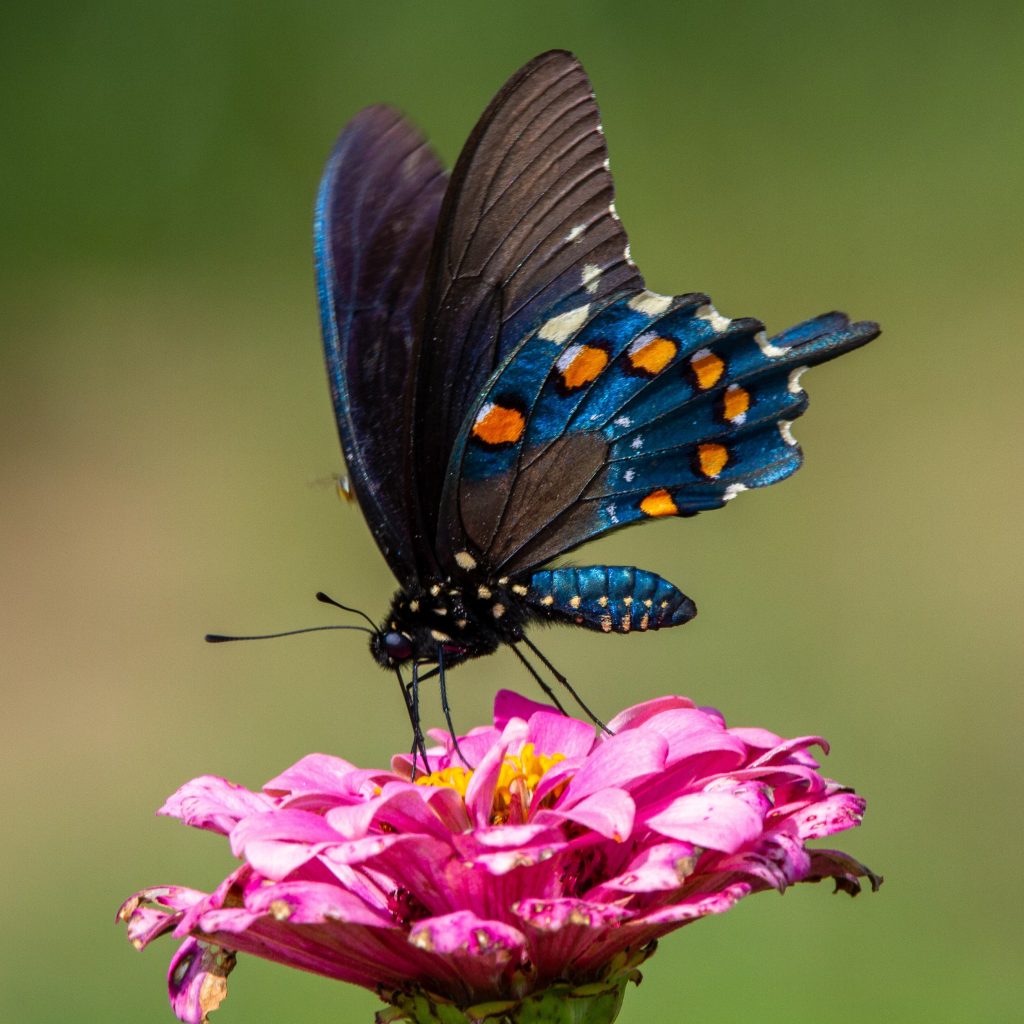
The Most Common Butterfly in the US is the Cabbage White
Named for its mostly white marking, when hints of yellow and green like the vegetable, the Cabbage White may not be the most colorful butterfly in your garden or yard, but it is the most common. The male Cabbage White has one prominent black spot on each wing, while the female has two.
Some Butterfly Species Migrate from the Cold
Although in many cases cold weather will end the already short life of a butterfly by rendering them immobile, others take the dropping temperature as a signal to move. Butterflies are cold-blooded and require – in ideal settings – a body temperature of approximately 85 degrees to activate their flight muscles. If the weather begins changing some species simply migrate in search of sunshine. Some, like the North American Monarch, travel an average of 2,500 miles!
One of the Largest Butterflies is the Giant Swallowtail Butterfly
With a wingspread of between four and seven inches, this species has a name that fits its dimensions. If you have ever seen one on a hike or around your yard, you may have been spellbound by the sight of it. Their swallowtail description is borrowed from birds of the same name, thanks to the long tails on this butterfly’s hindwings.
Butterflies Have a Liquid Diet
We mentioned earlier that butterflies like to eat, which is true. What we didn’t include at the time is that their source of food is exclusively liquid. In fact, they simply don’t have the necessary apparatus for chewing. Using their proboscis, which functions in the same way you or I might use a straw, butterflies drink nectar or some other variation of liquid sustenance.
Butterfly Wings Help Them Against Predators
As we’ve discussed, the lifespan of the average butterfly is short, and even at their peak, these insects are some of the most fragile. Staying alive for as long as possible allows the butterfly additional opportunities to mate, and continuing the existence of its species is of utmost importance. Therefore, butterflies frequently use their wings as a defense mechanism. Either by folding to blend in with their surroundings, or wearing a full spectrum of colors and patterns to frighten predators, a butterfly’s wings are often their best protection.
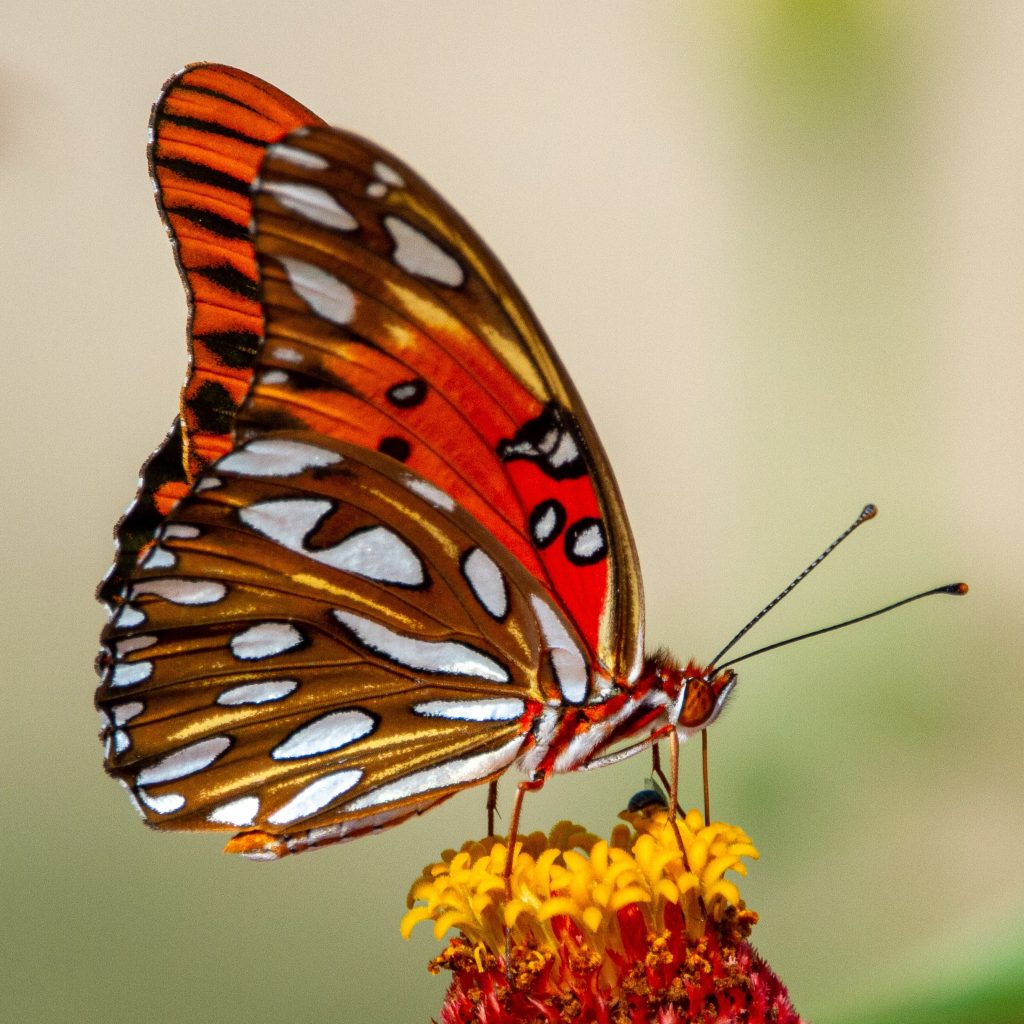
Butterflies Have Four Wings, Not Two.
Speaking of wings, we may have intentionally left the most fascinating butterfly fact until last! Despite how they may appear in motion, or in drawings or paintings you may have seen, butterflies have four separate wings. The wings closest to its head are called the forewings, while those in the rear are called the hindwings. Thanks to the strong muscles in the butterfly’s thorax, all four wings move up and down in a figure-eight pattern during flight.
Check out the Butterfly Exhibit at Long Island Aquarium sponsored by Suburban Exterminating! It’s fun for the whole family and you’ll learn more about butterflies, bugs, and birds!
How many legs do butterflies have?
Butterflies have six jointed legs, a pair of antennae and three body parts called a head, thorax (chest), and abdomen (tail end). The four wings and the six legs of a butterfly are attached to its thorax.
Special sensors on a butterfly or moths’ feet allow the insect to taste their food. Butterflies can not taste through their mouthparts. They also do not have mouthparts that can bite and chew, instead they have a long thin tubular structure that acts like a straw.
How many wings does a butterfly have?
Butterfly have four wings which are brightly coloured and patterned. Butterfly wings are covered in tiny scales and they are the only insects with scaly wings.
Each scale on a butterflies wings are a single colour, either red, yellow, black or white. Butterfly colours, including green and blue, are created by light refracting (bending) on the butterfly’s wings.
The patterns and colours on a butterfly wings are symmetrical and as the butterfly grows older, its wings fade and become ragged.
Butterfly metamorphosis
Butterflies transform themselves four times in their life. This process is called metamorphosis. A butterfly begins its life as an egg, usually laid on a leaf. A larva (caterpillar) hatches from the egg and feeds on leaves or flowers. The larva will grow bigger and bigger until it is several thousand times its original size before turning into a pupae or chrysalis. Eventually a beautiful, butterfly emerges from the pupae.
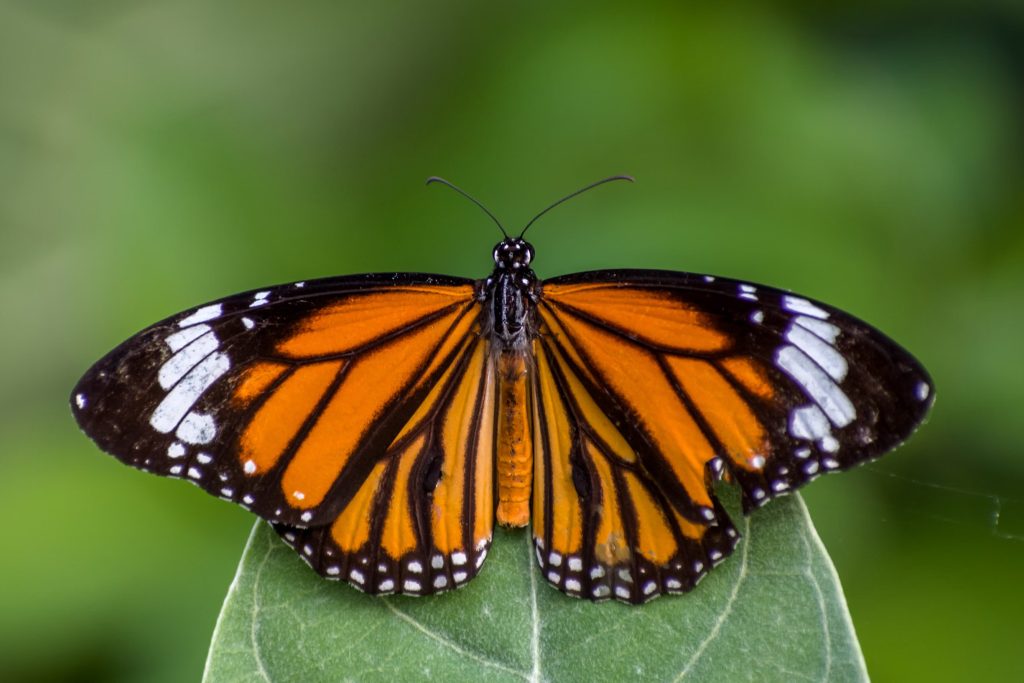
Butterfly lifecycle
Butterflies and moths go through several different life stages in their lives. They start life as a small egg attached to a plant – often on the leaf – by glue that was produced from the adult butterfly as it laid an egg. When it is ready, the egg hatches out into a caterpillar, or larvae, which then proceeds to eat as much as possible. It often grows several times its original size and sheds its skin to do just that.
When it is fully gown, the caterpillar will fix itself to somewhere, again often the underside of a leaf or branch, and shed its final skin to reveal a pupae or chrysalis. Moth caterpillars actually spin a cocoon using a leaf, in which the pupae then develops.
Unveiling the Mysteries: 10 Fascinating Facts About Butterflies
Butterflies are one of the most enchanting insects on the planet. Their vibrant colors, graceful flight, and transformative life cycle have captured the imaginations of people for centuries. But how much do we really know about these winged wonders? Here, we delve into 10 fascinating facts about butterflies that are sure to make you appreciate them in a whole new light.
Fact 1: Transparency of Butterfly Wings
Butterfly Wings are Clear
One might assume that the vibrant colors we see on butterfly wings are a part of the wings themselves. But that’s not entirely true. The wings of a butterfly are actually transparent. They are covered with tiny scales that reflect light in different colors, creating the beautiful patterns we see. Each wing is made up of a protein known as chitin, which is also found in the exoskeleton of insects. This chitin is clear, and the colors we see are simply a reflection of light off the microscopic scales.
Fact 2: A Myriad of Species
Nearly 20,000 Butterfly Species Exist
While many people might be aware of common butterfly species like the Monarch or Painted Lady, few realize just how diverse the butterfly world is. There are nearly 20,000 different species of butterflies, found in various habitats around the world except Antarctica. This diversity is a testament to the adaptability and evolutionary success of butterflies.
Fact 3: Tasting with Their Feet
Butterflies Taste with Their Feet
It may sound strange, but butterflies use their feet to taste. Their feet are equipped with taste receptors, which they use to find suitable host plants for laying their eggs. This incredible adaptation ensures that their offspring will have the necessary food resources for survival.
Fact 4: Life Span of Butterflies
The Short Life Span of Butterflies
While butterflies may seem ethereal and timeless, their lives are actually quite fleeting. The average adult butterfly only lives for a few weeks. However, the entire life cycle of a butterfly, from egg to caterpillar to pupa to adult, can last anywhere from two months to nearly a year. This short lifespan is a reminder of the ephemeral beauty of nature.
Fact 5: The Most Common Butterfly
The Cabbage White is The Most Common Butterfly in the U.S.
The Cabbage White butterfly, named for its white coloration, is the most common butterfly species in the United States. This butterfly has a black spot on each wing, with females having two. Despite their lack of flashy colors, these butterflies are a delightful sight in gardens and parks across the country.
Fact 6: Migration of Butterfly Species
Some Butterfly Species Migrate to Avoid Cold Weather
Butterflies are cold-blooded creatures, which means they rely on the environment to regulate their body temperature. Some species, like the famous Monarch butterfly, embark on epic migrations to escape cold weather and find warm, hospitable climates. These journeys can cover thousands of miles and are one of nature’s most awe-inspiring phenomena.
Fact 7: The Giant Swallowtail Butterfly
One of the Largest Butterflies is the Giant Swallowtail Butterfly
The Giant Swallowtail butterfly is one of the largest butterflies, boasting a wingspan of up to seven inches. Its name is derived from the swallowtail-like projections on its hindwings, a feature that distinguishes it from other butterfly species. Witnessing this colossal butterfly in flight is a truly magnificent sight.
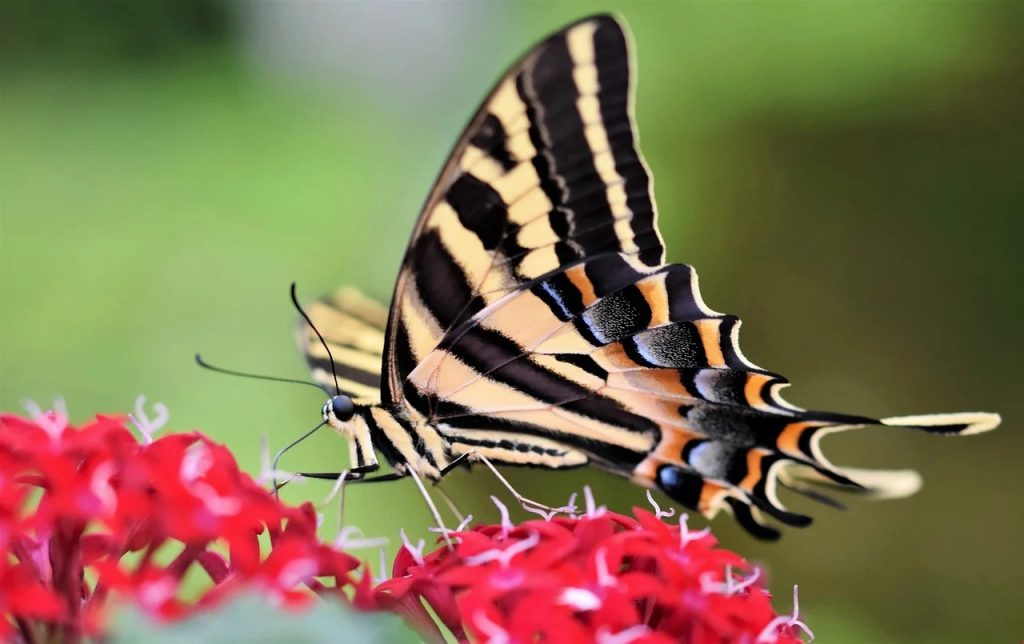
Fact 8: Liquid Diet of Butterflies
Butterflies Follow a Liquid Diet
Butterflies are known for their ethereal beauty, but did you know they also have a unique diet? Unlike many other insects, butterflies cannot chew. Instead, they have a long, tube-like tongue called a proboscis that they use to drink nectar and other liquids. This adaptation is perfectly suited to their nectar-rich diet.
Fact 9: Defense Mechanisms
Butterfly Wings Act as a Defense Mechanism
While butterflies may seem delicate, they have impressive defense mechanisms. Their vibrant wings can act as a deterrent to predators. Some species have eye-like spots on their wings to intimidate potential threats, while others blend into their surroundings to avoid detection. These strategies help butterflies survive in a world full of predators.
Fact 10: The Number of Wings
Butterflies Have Four Wings, Not Two
One common misconception about butterflies is that they have two wings. In reality, they have four wings – two forewings at the front and two hindwings at the back. These wings move in a figure-eight pattern during flight, providing the graceful, fluttering movement that we associate with butterflies.
Conclusion: The Wonders of Butterflies
These 10 fascinating facts about butterflies reveal just how incredible these creatures are. From their transparent wings to their liquid diets, butterflies are full of surprises. So the next time you see a butterfly fluttering by, take a moment to appreciate the wonder of these beautiful and complex creatures.
“Butterflies are self-propelled flowers.” – R.H. Heinlein
This article is part of our series on the wonders of the natural world. For more fascinating facts about animals, plants, and ecosystems, click here.
Please share this article on social media to spread the word about the incredible world of butterflies!
